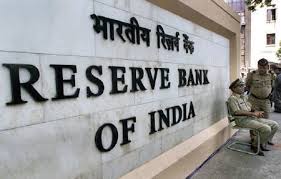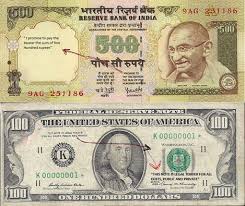Difference between revisions of "Banking"
| Line 80: | Line 80: | ||
= Project Ideas = | = Project Ideas = | ||
| + | |||
| + | |||
| + | Across | ||
| + | 1 A bank account you use to pay everyday expenses. (8) | ||
| + | 4 A bank employee. (6) | ||
| + | 5 Income before you pay taxes. (5) | ||
| + | 7 Take money out of the bank. (8) | ||
| + | 8 Borrowed money that you pay back at a regular interval. (7) | ||
| + | 10 Every month. (7) | ||
| + | 11 Put money in the bank. (7) | ||
| + | 12 Money borrowed on a credit card. (11) | ||
| + | 15 An interest rate that changes with time. (8) | ||
| + | 17 Money that you borrow. (4) | ||
| + | 18 A bank's main interest rate. (5) | ||
| + | 19 Not pay a loan. (7) | ||
| + | 21 A bank account you use to save money. (7) | ||
| + | 24 Money you pay to do something. (3) | ||
| + | 25 Guarantee a loan for somebody else. (6) | ||
| + | 28 The opposite of lend. (6) | ||
| + | 30 A monthly fee on borrowed money. (8) | ||
| + | 31 What you have if you borrow money. (4) | ||
| + | Down | ||
| + | 1 The maximum you can borrow on your credit card. (11) | ||
| + | 2 Keep your money __ the bank. (2) | ||
| + | 3 A house loan. (8) | ||
| + | 4 Go __ the bank. (2) | ||
| + | 6 The opposite of save. (5) | ||
| + | 9 A cash machine. (3) | ||
| + | 12 VISA or MasterCard. (10) | ||
| + | 13 You are your own boss. (12) | ||
| + | 14 Yearly. (6) | ||
| + | 16 Work __ a bank. (2) | ||
| + | 20 Move money between bank accounts. (8) | ||
| + | 22 Money that you earn. (6) | ||
| + | 23 Money that you withdrew from your account. (5) | ||
| + | 24 An interest rate that stays the same. (5) | ||
| + | 26 Your monthly wage. (6) | ||
| + | 27 Another word for money. (5) | ||
| + | 29 Income after you pay taxes. (3) | ||
| + | |||
| + | |||
| + | |||
| + | |||
| + | |||
| + | |||
| + | |||
| + | |||
| + | © 2004 www.bogglesworldesl.com | ||
= Math Fun = | = Math Fun = | ||
Revision as of 16:32, 25 October 2014
| Philosophy of Mathematics |
While creating a resource page, please click here for a resource creation checklist.
Error: Mind Map file BANKING.mm not found
Textbook
Please click here for Karnataka and other text books.
Additional Information
Useful websites
to know more about the history of bank click hear http://en.wikipedia.org/wiki/Banking_in_India
Reference Books
Teaching Outlines
Concept .1.Introduction
Learning objectives
Notes for teachers
These are short notes that the teacher wants to share about the concept, any locally relevant information, specific instructions on what kind of methodology used and common misconceptions/mistakes.
Activities
- Activity No #1 Introduction - visit to a bank ===
- Activity No #2 Concept Name - Activity No.
Concept #2. Banking
Learning objectives
Notes for teachers
These are short notes that the teacher wants to share about the concept, any locally relevant information, specific instructions on what kind of methodology used and common misconceptions/mistakes.
Concept #3. saving bank account
Learning objectives
Notes for teachers
These are short notes that the teacher wants to share about the concept, any locally relevant information, specific instructions on what kind of methodology used and common misconceptions/mistakes.
Concept #4.Types of saving bank account
Learning objectives
Notes for teachers
These are short notes that the teacher wants to share about the concept, any locally relevant information, specific instructions on what kind of methodology used and common misconceptions/mistakes.
Learning objectives
Notes for teachers
These are short notes that the teacher wants to share about the concept, any locally relevant information, specific instructions on what kind of methodology used and common misconceptions/mistakes.
Concept #6.calcutation of interest in SB account
Learning objectives
Notes for teachers
These are short notes that the teacher wants to share about the concept, any locally relevant information, specific instructions on what kind of methodology used and common misconceptions/mistakes.
Activities
- Activity No #1 Concept Name - Activity No.
- Activity No #2 Concept Name - Activity No.
Assessment activities for CCE
Hints for difficult problems
Exercise 2.2.5
The difference between compound and simple interest on a certain sum for 2 years is 7½ % per annum is Rs 360. Find the sum .Verify the answer.
solution
[Banking]
Project Ideas
Across 1 A bank account you use to pay everyday expenses. (8) 4 A bank employee. (6) 5 Income before you pay taxes. (5) 7 Take money out of the bank. (8) 8 Borrowed money that you pay back at a regular interval. (7) 10 Every month. (7) 11 Put money in the bank. (7) 12 Money borrowed on a credit card. (11) 15 An interest rate that changes with time. (8) 17 Money that you borrow. (4) 18 A bank's main interest rate. (5) 19 Not pay a loan. (7) 21 A bank account you use to save money. (7) 24 Money you pay to do something. (3) 25 Guarantee a loan for somebody else. (6) 28 The opposite of lend. (6) 30 A monthly fee on borrowed money. (8) 31 What you have if you borrow money. (4) Down 1 The maximum you can borrow on your credit card. (11) 2 Keep your money __ the bank. (2) 3 A house loan. (8) 4 Go __ the bank. (2) 6 The opposite of save. (5) 9 A cash machine. (3) 12 VISA or MasterCard. (10) 13 You are your own boss. (12) 14 Yearly. (6) 16 Work __ a bank. (2) 20 Move money between bank accounts. (8) 22 Money that you earn. (6) 23 Money that you withdrew from your account. (5) 24 An interest rate that stays the same. (5) 26 Your monthly wage. (6) 27 Another word for money. (5) 29 Income after you pay taxes. (3)
© 2004 www.bogglesworldesl.com



